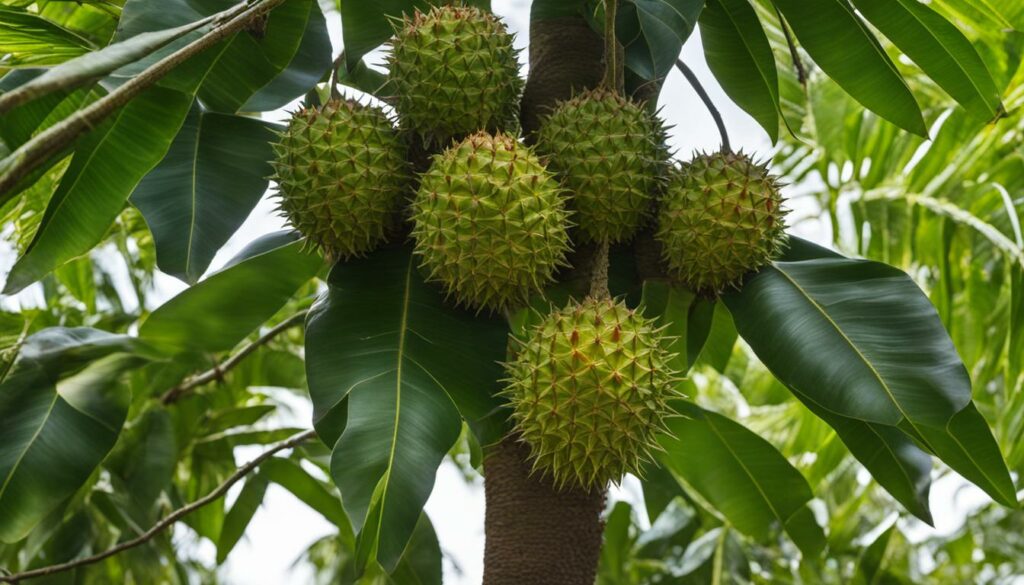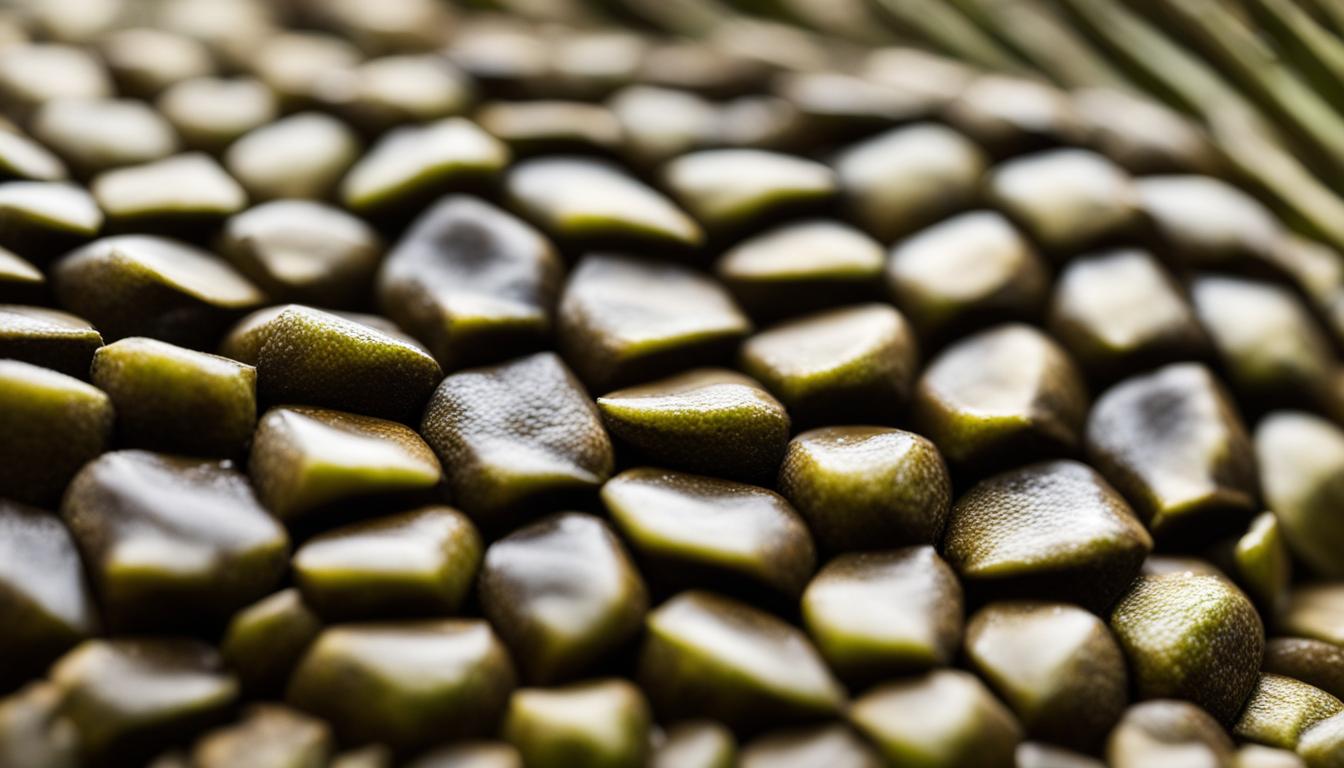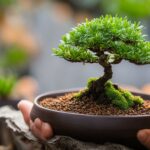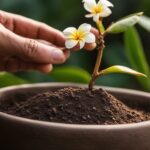Welcome to our step-by-step Guanabana seed planting guide! If you’re looking to grow your own Guanabana tree and enjoy its delicious fruits, you’ve come to the right place. In this article, we’ll walk you through the process of planting Guanabana seeds, from choosing the right seeds to caring for your seedlings. So grab your gardening gloves and let’s get started!
Choosing and Preparing Guanabana Seeds
When it comes to planting guanabana seeds, the first step is to choose the right seeds. You can obtain guanabana seeds from the guanabana fruit itself or purchase them online or from nurseries. Make sure the seeds are fresh and viable for optimal germination.
Once you have your guanabana seeds, it’s important to prepare them before planting. Soaking the seeds in warm water overnight can help trigger germination. This process softens the seed coat, allowing the embryo inside to absorb water and begin the germination process.
After soaking the seeds, it’s time to plant them. Use small pots filled with rich potting soil and plant the seeds about half an inch deep. Place the pots in a warm, shady spot such as a greenhouse to provide the seeds with the ideal conditions for germination. Regularly water the soil to keep it moist, but avoid overwatering as it can lead to root rot.
Keep in mind that not all seeds may germinate, so it’s recommended to plant multiple seeds to increase the chances of success. Once the seedlings have grown, they can be transplanted into the ground following the guidelines in the next section.
Guanabana Seed Planting Tips:
- Choose fresh and viable guanabana seeds for optimal germination.
- Soak the seeds in warm water overnight to trigger germination.
- Plant the seeds half an inch deep in small pots filled with rich potting soil.
- Place the pots in a warm, shady spot such as a greenhouse.
- Regularly water the soil to keep it moist.
- Plant multiple seeds to increase the chances of success.
“Soaking the guanabana seeds before planting can significantly improve germination rates.” – Gardening Expert
Planting Guanabana Seedlings
Once the guanabana seedlings have grown and become strong enough, it’s time to transplant them into the ground. This step is crucial for their successful growth and development. Here are some important tips and guidelines to follow when planting guanabana seedlings:
Preparing the Planting Site
Choose a suitable location in your garden or yard for planting the guanabana seedlings. Ensure that the area receives ample sunlight and has well-draining soil with a pH range of 5.5 to 6.5. Dig a large hole for each seedling, making sure it is deep and wide enough to accommodate the entire root ball.
Transplanting the Seedlings
Gently remove the guanabana seedlings from their pots, being careful not to damage the roots. Place each seedling into the prepared hole and backfill it with potted soil. Press the soil gently around the base of the seedling to ensure it is secure. Add a three-inch layer of mulch around the plant base to retain moisture and suppress weed growth.
Providing Care for the Seedlings
After transplanting the guanabana seedlings, it’s important to provide them with proper care. Keep the seedlings indoors for at least six months, especially if the climate is not ideal. This will help protect them from extreme weather conditions and allow them to establish strong root systems. Additionally, consider increasing humidity levels in the greenhouse to create an optimal environment for growth.
Table: Tips for Planting Guanabana Seedlings
| Tip | Description |
|---|---|
| Choose the right location | Select a spot with adequate sunlight and well-draining soil. |
| Prepare the planting hole | Dig a large hole that can accommodate the entire root ball of the seedling. |
| Backfill with potted soil | Carefully place the seedling in the hole and fill it with potted soil. |
| Add mulch | Apply a three-inch layer of mulch around the base of the seedling for moisture retention. |
| Provide indoor protection | Keep the seedlings indoors for at least six months to protect them from unfavorable conditions. |
By following these steps and providing the necessary care, you can ensure the successful planting of guanabana seedlings. Remember to monitor their growth progress, water them regularly, and provide any additional support they may need. With time and proper care, your guanabana trees will thrive and reward you with delicious fruits in the future.
Guanabana Seed Planting Techniques: Preparing the Soil
Proper soil preparation is essential for successful guanabana seed planting. Guanabana trees thrive in well-draining soil with a pH range of 5.5 to 6.5. To ensure optimal growth, it is important to enrich the soil with organic matter such as compost or manure. This will provide essential nutrients and improve soil structure.
Before planting, it is crucial to remove rocks and debris from the soil. These can hinder root development and drainage. By creating a clean planting bed, you can create a favorable environment for guanabana seeds.
If necessary, adjust the soil pH using sulfur or aluminum sulfate. This will help create the ideal acidic soil conditions for guanabana trees to thrive. Regularly renewing the compost layer around the trees will retain soil moisture, improve fertility, and suppress weed growth.
Benefits of Proper Soil Preparation for Guanabana Trees
- Enhanced root development: Proper soil preparation promotes healthy root growth, allowing guanabana trees to access essential nutrients and water.
- Improved drainage: Well-draining soil prevents waterlogging, reducing the risk of root rot and other moisture-related issues.
- Nutrient availability: Enriching the soil with organic matter provides a steady supply of nutrients, promoting vigorous growth and fruit production.
- Weed control: By regularly renewing the compost layer, you can suppress weed growth, minimizing competition for resources.
<!–
–>
By following these soil preparation techniques, you can create the optimal growing conditions for guanabana trees. Remember, healthy soil is the foundation for healthy plants.
Table: Soil pH Adjustments
| Soil pH | Adjustment Method |
|---|---|
| Below 5.5 | Add sulfur to lower pH |
| Above 6.5 | Add aluminum sulfate to lower pH |
Guanabana Seed Planting Tips and Advice
Caring for guanabana trees requires attention to detail and proper maintenance. By following these tips and advice, you can ensure the health and vitality of your guanabana trees, increasing the chances of a successful harvest in the future.
Regular Organic Fertilization
One key aspect of guanabana tree care is the use of organic fertilizer. Starting with a quarter pound of organic fertilizer twice a year in the first year of planting is recommended. As the tree grows, increase the amount to half a pound twice a year. Organic fertilizers provide essential nutrients and support healthy growth.
Annual Pruning for Pollination
To promote pollination and maintain a well-shaped tree, annual pruning is necessary. Prune the tree during the dormant season, removing any dead or diseased branches. This helps improve air circulation and sunlight penetration, leading to better fruit production.
Mulching and Soil Health
Applying a layer of mulch around the base of guanabana trees helps retain soil moisture and suppresses weed growth. Additionally, adding humus and organic matter to the soil improves its health and fertility. Regularly inspect the soil for signs of nutrient deficiencies and adjust the fertilizer accordingly.
Keep a close eye on your guanabana trees for any signs of pests or diseases. Common issues include mealybugs, scale insects, and fruit rot. If you notice any problems, take immediate action to prevent further damage. Remove affected parts or use appropriate pest control measures to protect the health of your trees.
By following these guanabana seed planting tips and advice, you can create an optimal environment for your trees to thrive and bear delicious fruits. Remember to provide regular fertilizer, engage in proper pruning, and maintain soil health. With care and patience, your guanabana trees will reward you with a bountiful harvest.

Guanabana Seed Planting Instructions and Techniques
Once your guanabana trees have grown from seeds and have been transplanted into the ground, it’s time to look forward to the exciting process of harvesting the delicious guanabana fruits. With the right instructions and techniques, you can ensure a successful harvest. Here are some key points to keep in mind:
Harvesting Timeline
Guanabana trees typically take between 3 to 5 years to bear fruit. However, factors such as soil quality, climate, and proper care can affect the fruiting timeline. It’s essential to be patient and provide the necessary conditions for your trees to thrive.
Identifying Ripe Fruits
When it’s time to harvest, look for guanabana fruits that have reached maturity. Ripe fruits will have a distinctive green-yellow color and may give off a fragrant aroma. They will feel slightly soft to the touch, indicating they are ready to be picked.
The Perfect Technique
To harvest the guanabana fruits, gently twist and pull them from the tree. Be careful not to damage the surrounding branches or the fruit itself. It’s best to use a pruning shears or a sharp knife to cut the stem cleanly just above the fruit.
Once you’ve harvested your guanabana fruits, you can enjoy their unique flavor in a variety of ways. From delicious preserves to mouth-watering desserts and refreshing beverages, guanabana fruits offer a delightful tropical taste sensation.
Remember, the journey from planting guanabana seeds to harvesting the fruits requires patience and proper care. But with these planting instructions and techniques, you’ll be well on your way to enjoying the bountiful harvest of your guanabana trees.
| Guanabana Seed Planting Instructions and Techniques |
|---|
| 1. Harvesting Timeline Guanabana trees typically take between 3 to 5 years to bear fruit. However, factors such as soil quality, climate, and proper care can affect the fruiting timeline. It’s essential to be patient and provide the necessary conditions for your trees to thrive. |
| 2. Identifying Ripe Fruits When it’s time to harvest, look for guanabana fruits that have reached maturity. Ripe fruits will have a distinctive green-yellow color and may give off a fragrant aroma. They will feel slightly soft to the touch, indicating they are ready to be picked. |
| 3. The Perfect Technique To harvest the guanabana fruits, gently twist and pull them from the tree. Be careful not to damage the surrounding branches or the fruit itself. It’s best to use pruning shears or a sharp knife to cut the stem cleanly just above the fruit. |

Conclusion
Guanabana seed planting requires a warm and humid environment, well-draining soil, and proper care and maintenance. By following the steps outlined in this guide, you can successfully plant guanabana seeds and enjoy the fruits of your labor in a few years. Remember to provide adequate sunlight, wind protection, and regular watering for optimal growth.
Guanabana trees thrive in USDA zones 10 through 13, with temperatures above 41°F and at least 6 hours of sunlight a day. They prefer well-draining sandy soil with a pH of 5 to 6.5. Adding organic matter like compost or manure can enrich the soil and promote healthier growth.
To ensure successful guanabana seed planting, soak the seeds in warm water overnight before planting. Choose a warm, shady spot to keep the pots, and water regularly to maintain soil moisture. Transplant the seedlings into the ground after they have grown, leaving enough space between each tree for proper root development.
Lastly, care and maintenance are crucial for the health of guanabana trees. Use organic fertilizer, prune annually, and regularly inspect for pests and diseases. Harvest the ripe fruits after 3 to 5 years, and savor their unique flavor in various culinary delights. Start your guanabana seed planting journey today and enjoy the delightful rewards in the future!
FAQ
What kind of environment do guanabana trees need to thrive?
Guanabana trees require a warm and humid environment to thrive.
What USDA zones are suitable for guanabana trees in the U.S.?
Guanabana trees are suitable for USDA zones 10 through 13 in the U.S.
How much sunlight do guanabana trees need?
Guanabana trees need at least 6 hours of sunlight a day, but can also tolerate partial shade with 4 to 6 hours of sunlight.
How should I protect guanabana trees from strong winds?
It is recommended to plant guanabana trees behind walls or buildings, or use stakes with burlap or plastic for wind protection.
How far apart should I space guanabana trees from other trees, buildings, and walls?
Guanabana trees should be spaced at least 7 ft from other trees and 20 ft from buildings and walls.
What kind of soil is preferred for guanabana trees?
Guanabana trees prefer well-draining sandy soil with a pH of 5 to 6.5.
How can I improve soil drainage for guanabana trees?
Soil amendments like compost, sand, vermiculite, or peat can be added to improve soil drainage.
How should I prepare guanabana seeds for planting?
Guanabana seeds should be soaked in warm water overnight before planting.
Where can I obtain guanabana seeds?
Guanabana seeds can be obtained from guanabana fruit or purchased online or from nurseries.
How deep should I plant guanabana seeds?
Plant guanabana seeds half an inch deep in a small pot filled with rich potting soil.
What care do guanabana seedlings need?
Guanabana seedlings need regular watering to keep the soil moist and should be kept in a warm, shady spot, such as a greenhouse.
How long does it take for guanabana trees to bear fruit?
Guanabana trees usually take 3 to 5 years to bear fruit.
What do guanabana fruits taste like?
Guanabana fruits have a unique taste resembling a fusion of strawberry, pineapple, coconut, and banana.





